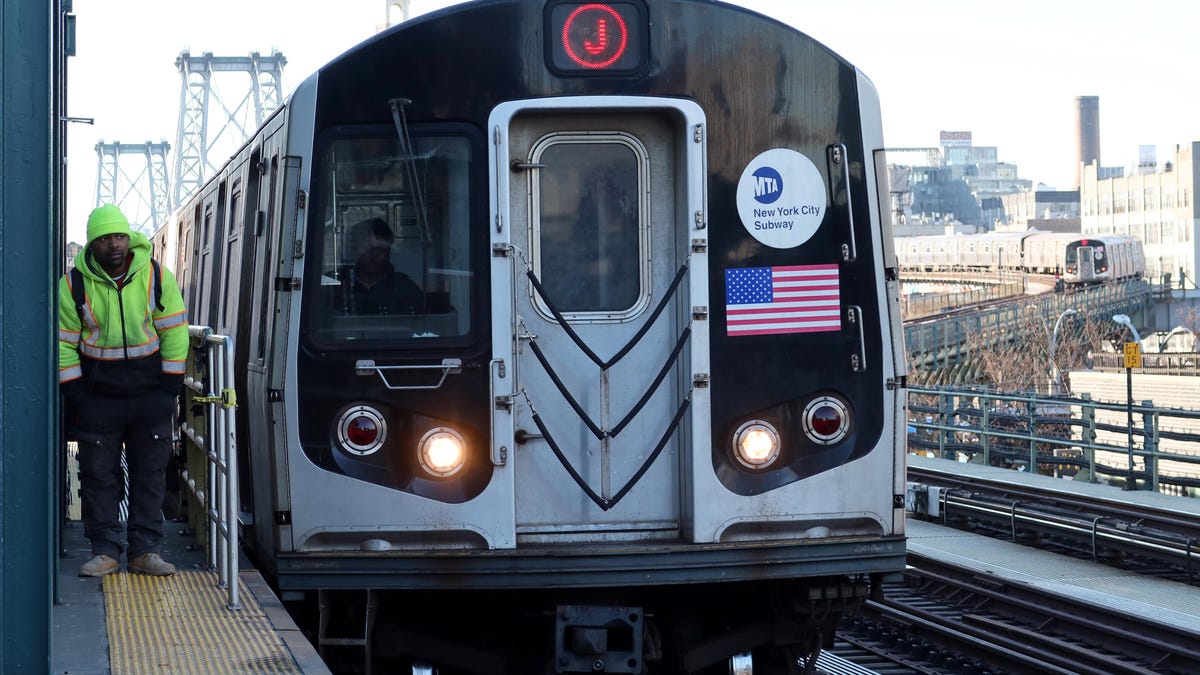New York MTA is battling COVID-19 with UV lights and infrared sensors
The MTA is looking at different technologies to make its subways, trains and buses safer for riders.

New York subway cars are disinfected twice a day.
New York City may be opening back up for business, but that doesn't mean everybody's ready to hop aboard its trains and buses yet. While daily ridership on subways and buses is up 380,000 compared with the period before the June 8 reopening date, that's still a fraction of the millions of riders who commuted in the pre-pandemic days.
The New York Metropolitan Transportation Authority knows it's an uphill climb to convince people with the specter of COVID-19 still looming over the city, and the agency has introduced a number of steps to disinfect its cars and encourage riders to wear masks and stay apart from each other, according to MTA Chairman and CEO Pat Foye.
"Our goal throughout is to take every action we can to minimize risk, and that continues to be our top priority," Foye said in an interview on Tuesday.
Questions and concerns abound over the safety of mass transit in the age of the coronavirus. A study from the Massachusetts Institute of Technology published in April claimed that the subways seeded the spread of COVID-19 in New York, although many critics have questioned the validity of the research. Foye, who tested positive for coronavirus in early April, said he doesn't believe that subways were a source of the infection and noted that studies around the world have shown that hasn't been the case.
But academic studies -- making one argument or another -- aren't going to keep people safe. Over the last three months, the MTA has been rolling out different ways to clean cars and ensure that people are practicing safe habits to help quell the spread of the disease.
UV and antimicrobials
Foye takes the Long Island Railroad into the city, and then transfers to the 2 or 3 line before switching over to the 1 to get to work. When asked what he would say to commuters still nervous about taking mass transit, he talked about his own experience.
"When I got on the 7:11 [Port Washington LIRR train], there were plenty of seats," he said. "The cars smelled and looked clean."
Last month, the MTA began shutting down the subway system between 1 a.m. and 5 a.m.daily, the first time it's ever done so, to disinfect the cars. Foye made the point that it wasn't simply cleaning but actually disinfecting the cars, and said it happens twice a day.
At the same time, the agency launched a $1 million pilot program to use ultraviolet light to sterilize its cars. The MTA plans to deploy 150 mobile devices at stations and rail yards to test the effectiveness of UV, and Foye said that the early research conducted by Columbia University has been promising.
In addition, the MTA is working on deploying antimicrobial solutions on the cars, which Foye said has shown promise in preventing the spread of the coronavirus.
Masks and social distancing
Foye said a study had shown that 95% of riders were wearing masks. New York Gov. Andrew Cuomo has mandated wearing masks on mass transit. But there are always holdouts.
The MTA began offering masks at stations, and platform controllers and other MTA employees are directing people to put masks on before getting into the cars.
"The mask message has been robustly communicated, and we continue to do that," he said.
The MTA is working to keep riders spaced apart with the launch of a capacity tracker, now available on the LIRR TrainTime app. The tracker tells riders how packed each car of a train is. The MTA calculates the capacity by using infrared sensors on the cars. Foye said that the MTA added some sensors but also used existing equipment to enable the feature.
The agency plans on expanding this capacity to subways, buses and the Metro North train system, he added.

